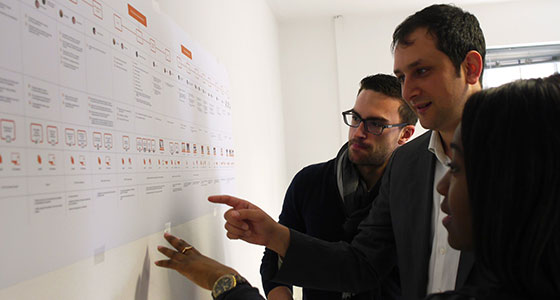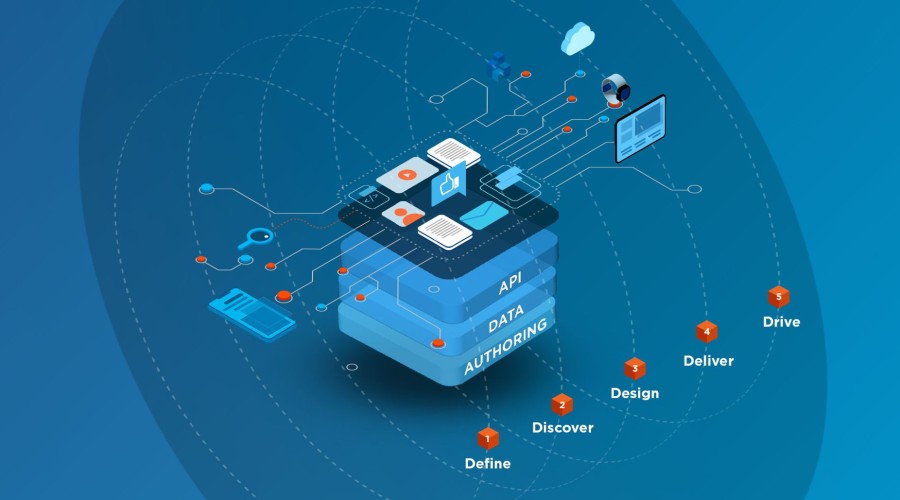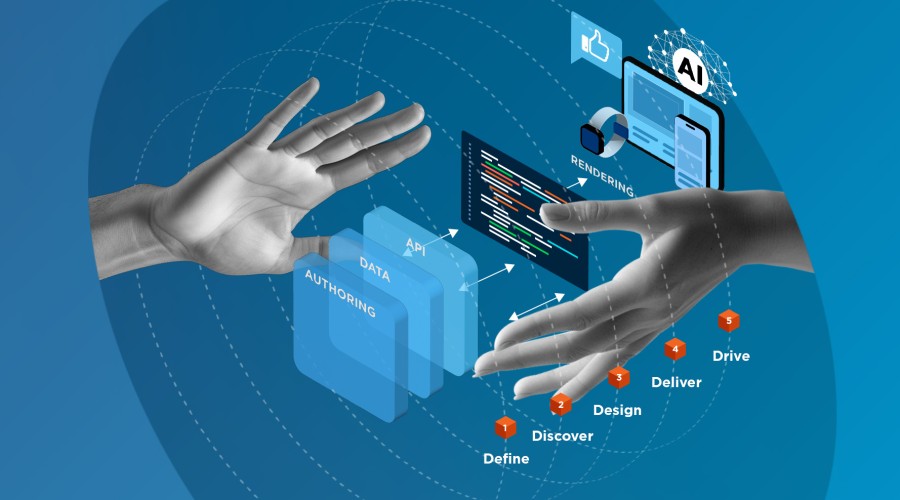Defining what design is isn’t an easy thing to do. It’s much easier to start with what it’s not. Steve Jobs once said design is “not just what it looks like and feels like – design is how it works.” This idea has stuck with me, and it’s what guides everything we stand for here at Cyber-Duck. That’s why we’ve learned what the secret to a successful digital transformation is: design thinking principles.
The making of a truly great product, system or service goes beyond what you can see. It encompasses what goes on beneath the surface – the purpose, brand positioning and processes that keep it ticking along – and how it relates to the consumer, technology, security and everything in-between.
A lot of people assume that’s all design is, a lick of paint, but this is the fundamental problem with the current state of ‘design’. We need to remedy this. How can we promote designers as problem solvers, not painters? How can we position designers as professionals who make things work for (and with) humans across multiple products and services?
Design thinking principles are the answer. Freed from the shackles and need to simply make things ‘look nice’, this concept reinstalls creative, functional problem-solving at the institutional level. This approach is the secret sauce for solving your digital transformation problems. Here, I'll discuss why it's crucial not to overlook design thinking principles in your digital transformation. To begin, let's look at why design thinking was Uber’s biggest missed opportunity – and how to avoid making it yours.
Uber – A Missed Opportunity?
Uber is the poster child of digital transformation. It is based on a platform of advanced iOS, Android and cloud hosting capabilities. Through its use of thoughtful UX/UI and bleeding-edge technology such as advanced algorithms, social connectivity, single-screen ecommerce and geo-fencing, it is a revolutionary, user-centric public transportation experience.
But just because you have best-in-class technology and UX, it doesn’t mean you can operate in a social vacuum. For instance, nobody’s escaped news of the sensational TfL decision to revoke Uber's licence, and it’s divided opinion throughout the capital. Recently, I was in a heated debate with a native liberal Cambridge academic and a PhD candidate who focuses more on capitalist American technology. Their conversation demonstrated just how much Uber polarises public opinion.
The Cambridge academic believes that Uber isn’t a cab company and that it greatly mismanages worker rights. She argued that the company doesn’t do proper criminal background checks, that staff had few rights and were not fully trained, unlike London cab drivers who undergo a seven-year course. Essentially, she pictured Uber as a ‘sweat shop on wheels’, only caring for the value of its share price, which fluctuates depending on how many users it has.
She had some good points, but so did the PhD candidate. He pointed out that while Uber doesn’t have proper vetting procedures, it does have a social proofing system. Its user-driven rating system and visible photographic profiles for drivers provides users with reassurance. Customers appreciate being able to track how far they are from the pick-up location, the ability to view the cost of the ride in advance and the constant GPS-enabled updates on the car’s location. These positives notwithstanding, there’s no escape from the negative press that Uber has received.
Both sides made strong arguments, but what I thought was that Uber had missed a great opportunity to improve its user experience; it had overlooked design thinking.
If Uber ‘designed’ a set of business principles and ethics that tied into a new overarching purpose statement such as “ethical transport for people”, it could redefine its business logic, rules and marketing and thus improve its perception with very little change to the underlying technology.
What if Uber had ‘designed’ better training and vetting for its drivers, which was more in line with traditional cab drivers? Let’s say a 3-month course, with better driver checks and an examination. Then, take it further with a 1-year employment contract for successful drivers, who passed a further 3 months of vetted driving skills.
Furthermore, my PhD candidate friend rightfully pointed out that Uber is a privately owned organisation. For some, this makes the company's activities opaque. But I thought that if Uber floated on the stock market and positioned itself as ‘everyone’s taxi company,’ it could give the public a sense of owning part of the most technologically advanced taxi company in the world.
A flotation could also increase the credibility of Uber’s business practices, as PLCs have far more burdensome accountability. Arguably, an accountable organisation would have negated tricking other technology companies and driver-driven surge pricing.
Diving into Design Thinking Principles
By tweaking Uber's current practices through design thinking principles, we can perfectly illustrate the benefits design thinking as a method can bring. Its strength lies in the fact the design thinking process is a strategic approach to design that can consider and solve issues for humans at a product, service, social or business level. As IDEO’s Tim Brown said, this is how we can avoid the idea of “designers, who have played no earlier role in the substantive work of innovation, coming along and [putting] a beautiful wrapper around the idea."
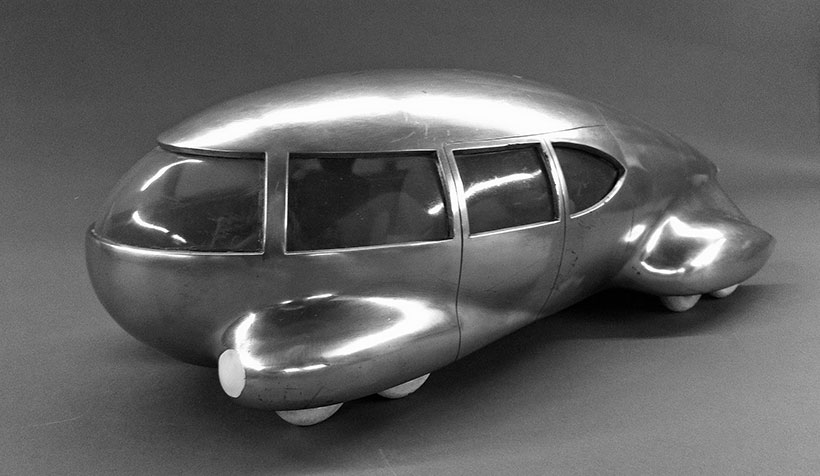
Infamously, Bel Geddes’ teardrop-shaped automobile is an example of designing for image and fashion rather than worldly problems.
Design thinking principles aim to place users at the centre of the design from the outset, allowing designers to weigh up the social impact across multiple persona groups and ensure that the technology morphs accordingly.
The great thing about the design thinking process is it enables organisations to tackle the larger problems for humans. Instead of concentrating on simply making a chair more ergonomic, or a user interface more user-friendly, designers and the teams they operate within approach designs from angles such as sustainability, philosophy and education.
So if the brief is to redesign the chair, a designer using ‘design thinking’ will challenge the notion and strategy of why a chair is needed in the first place. Perhaps a stand-up desk is a ‘healthier’ product? Design thinking then leads you to ask even harder questions such as “Where is the room that people need to sit in and why do they need to be there in the first place”?
By reinstalling humans at the centre of design, the likes of culture and context become the focal point once more. This preliminary understanding will see designers solving worldly problems yet again.
Digital Transformation & Design Thinking Principles
My previous articles have outlined how modern digital transformation must be customer-centric if it is to succeed. This is why the discipline of UX is so embedded in digital transformation.
Successful digital transformation and design thinking principles share an intense focus on users. Through reflective thinking and empathy, they seek to solve the past, present and future problems users might face. Design thinking, however, is more revolutionary in how it questions broader societal and ethical dilemmas.
Cross-functional teams are just as critical for the design thinking process as they are for digital transformation. You must encourage a culture where problems are understood and challenged from all possible angles through a blend of qualitative and quantitative research. In many instances, designers will use their findings to create prototypes. By manifesting your ideas in physical, prototype form, you will have the means to gain feedback on strengths and weaknesses, speeding up innovation and thus the success of your ideas.
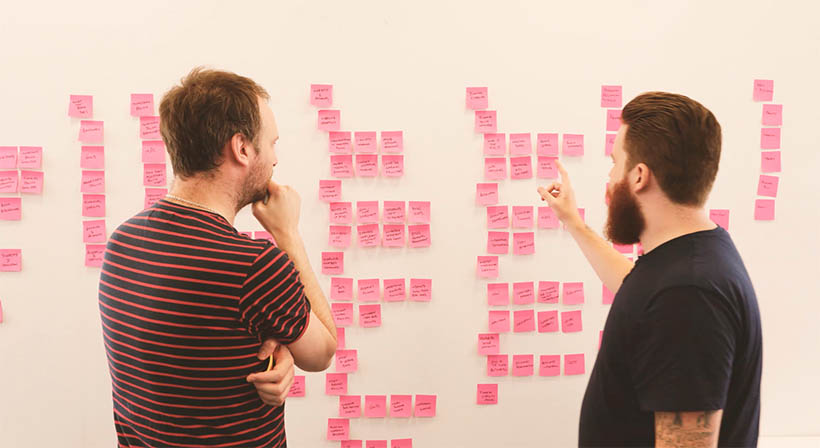
We use design thinking to approach all of our projects here at Cyber-Duck - the name of the game is to innovate and improve usability.
As I’ve argued elsewhere, digital transformation challenges your company culture to succeed. Design thinking principles are crucial for this, but brings an inherent risk. It might reveal a fundamental flaw in your existing product and service paradigms, which businesses must address and innovate to solve. This naturally poses many risks, a worrying prospect for some seeing as many organisations are risk averse.
But there are benefits to addressing this issue and making your organisation take some risks with innovation. A phenomenal example of design thinking implemented on a large scale can be seen in Estonia, the post-Soviet nation. The Estonian project is known as e-Estonia, a potentially revolutionary plan to change the country from a traditional state into a digital society of tomorrow.
What e-Estonia aims to do is to link up all the strands of the state - be it voting, health care, taxes, education, policing and so on - on a single platform. It streamlines huge aspects of people's lives. For instance, it eliminates the need to fill out countless forms so that one institution - say, the bank - can access your information from another - like the tax office. Basically, all bureaucratic processes can be completed online, allowing citizens to live their lives hassle-free. Imagine being able to spend precious time with friends or family instead of going to the polling station?
The benefits of taking this innovative risk and creating a virtual government are myriad. One such benefit has been that the state has managed to save around 2% of GDP on costs, which is the same percent each member of NATO is expected to pay for protection.
Compounding this benefit is the fact that because its government is virtual, the state is effectively borderless. As a result, entrepreneurs can now invest and test their products in Estonia, no matter where they come from. So not only does Estonia save money on expenditure, it encourages investment from around the world too - it's both cost-effective and a driver of revenue.
Estonia's digital revolution is a far cry from where the country was originally, when it was best known for its logging industry. Now it is a world-renowned country of digital innovation.
What can we learn from Estonia when applying it to a business? Namely, central to design thinking principles is the notion that it’s not just about creativity. Design thinking aims to challenge convention and join up the dots by thinking across multiple latitudes and spheres. Design thinking principles even question the actual design process.
Design Thinking Principles at Cyber-Duck
We started life as a design agency in 2005, and our primary function was to design and develop multimedia, websites and applications. Even back then, we came to realise that many briefs were missing something. They focused on what we needed to build, but not why it was meaningful for their business or their users.
In light of this, our work with clients gradually evolved to take on a user-focused approach. By incorporating usability testing and persona-driven design, this would allow us to figure out what needs to be designed in the first place. Cyber-Duck now utilises user-centred and then data-driven design as building blocks for digital transformation and design thinking principles. We focused on people, societies and data first, interfaces and technology second. We then reuse or even innovate processes to deliver transformation in a lean and agile way.
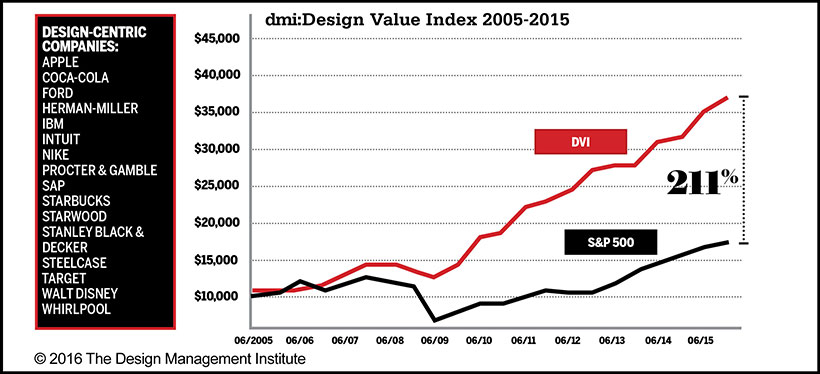
In 2015, the Design Management Institute’s demonstrated that design-led companies outperformed the S&P 500 by an extraordinary 211% - a clear reason to adopt design thinking. [Source]
As Digital Transformation becomes more common, organisations have the opportunity to look at the ‘bigger picture’ and question their role in society. This is where design thinking comes into play – why iterate when it’s time to fundamentally change your approach? Yes, there are inherent risks but what sort of legacy do you want to leave behind?
If you have any queries about how best to use design thinking in your organisation, be sure to get in touch with our friendly team. We’re always happy to discuss how our UX professionals can help!
